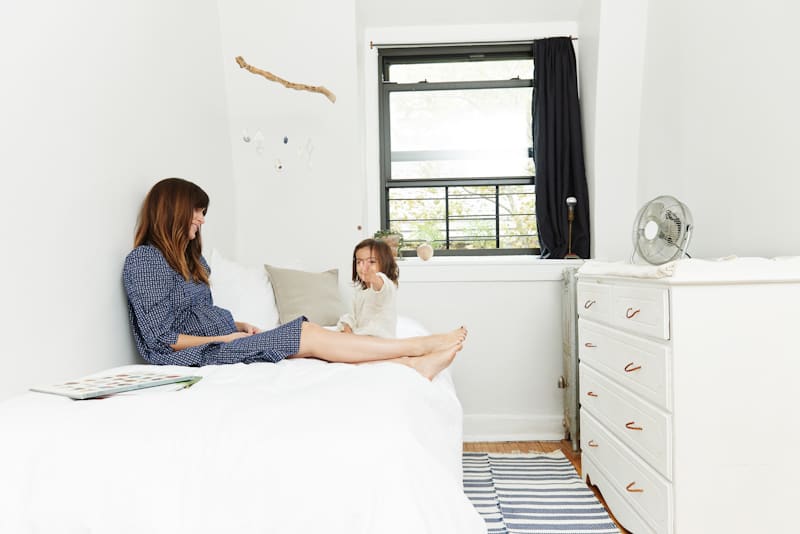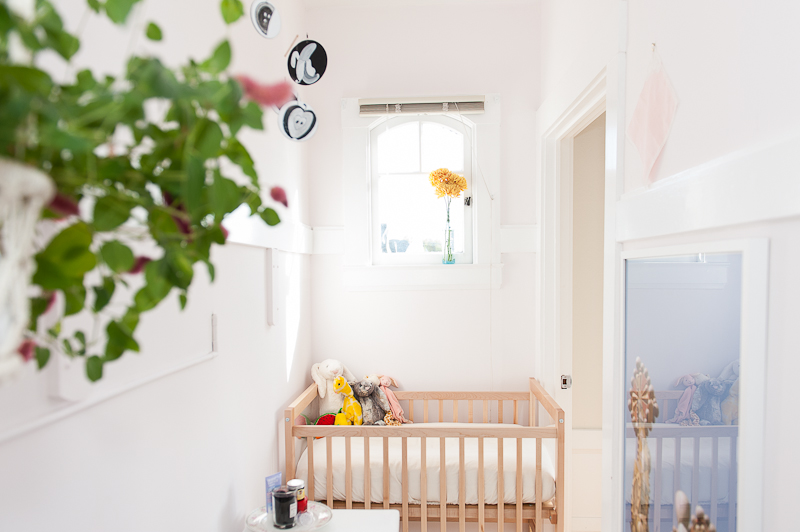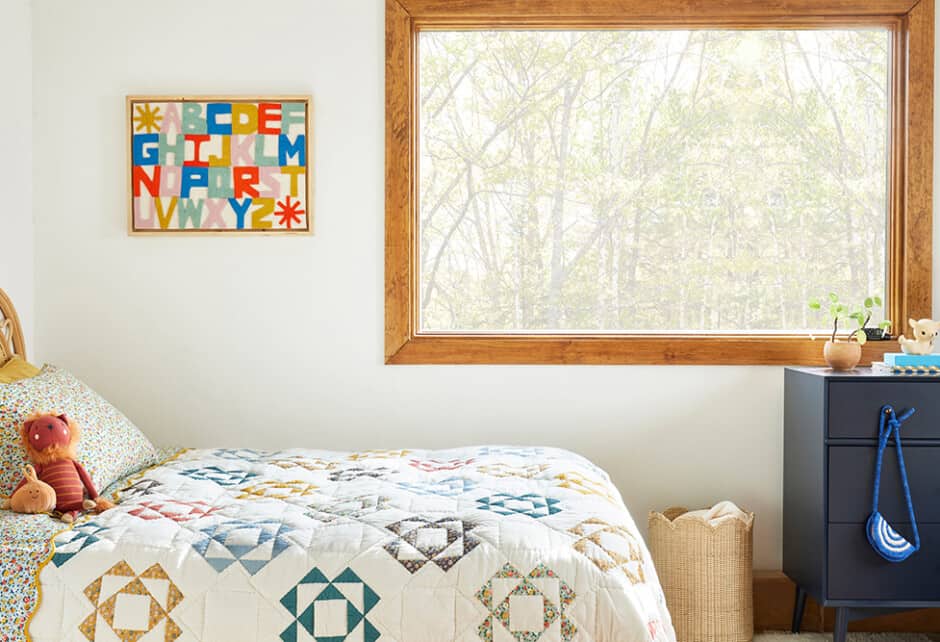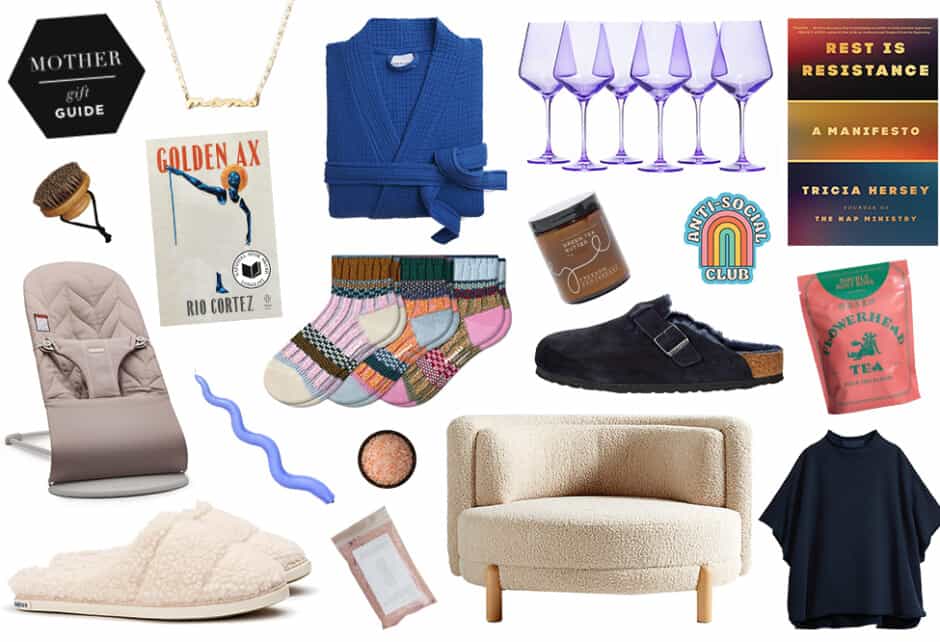
How to Be a Minimalist with Kids
Written by Sara Langer
Photography by Maria Del Rio
There’s a definite movement happening among certain groups of mamas and papas today—the yearning for less “stuff.” Especially for newly expecting families concerned that a small home will soon be overrun with bins of plastic toys, creating a plan with how they’ll check this situation before it happens is helpful. And, of course, no matter your kid’s age, there’s always room for rejiggering your family situation if the explosion of possessions and general consumption has gotten out of hand. If being a minimalist with kids is your goal, check out the tips we’ve culled below, from a handful of parents who’ve done it and done it well.
Look at yourself first.
It can be overwhelming to try and imagine how to pair down the possessions of your entire family. Even if you’re ready to simplify, those that you live with may not be there yet. Instead of fretting about how to whittle down your children’s massive toy pile or your partner’s book collection, start by focusing on your own things. While you may find varying advice on how to approach minimalism with a family, most of the experts agree that the first step is starting with yourself. Not only will your process of decluttering and simplifying help you identify what’s important to you and free up your precious time and resources, you will likely inspire those around you to make some changes, too.
Minimalism is a conversation.
From Leo Baubata, father of six and author of Zen Habits
“Minimalism isn’t about getting rid of all your stuff and living with barely anything. In a family, minimalism is really a conversation about what’s important. What’s necessary. Why we own things and do things. A lot of times, a family will never really have this conversation—it’s all just implied in the way we live. But minimalism is about bringing this out in the open and talking about it. The result of the discussion will be very different for each family—some will keep doing what they’ve been doing because they like that best, but others will decide to try various changes, and there’s no single right way. The important thing is to start the conversation and to keep it going basically for the rest of your lives.”
Offer alternative ideas for gifts.
From Erin Boyle, mother of two and author of the blog Reading My Tea Leaves
“My main tactic has been to be really frank about our wishes. Before we had our first child, when folks asked what we needed for the new baby, I let them know that we didn’t need much and that we were taking a deliberately minimal approach to baby gear. Did people think I was a little kooky? Definitely. But they got the message. Of course, writing about this stuff for a living helps, too, but in general, I honestly think open conversations with loved ones gets the best results. Offering ideas for alternative gifts, like experiences—a picnic with grandma and grandpa, an afternoon of kite flying with an aunt, an outing to an afternoon music class with an uncle—helps, too! As my kids get older, I’m really working on emphasizing the overall experience of the holiday or birthday, rather than focusing on the gift-giving element alone.” Note: The soon-to-launch start-up Littlefund is geared towards stuff-averse parents and encourages gifting in the form of a contribution towards savings for education, specific experiences, or favorite charities.
Sharing instead of storage.
From Alison Mazurek, mother of two and author of the blog 600sqftandababy
“We saved the big pieces/purchases like the mini crib, Nuna Leaf chair, Stokke highchair, Puj tub, Ergobaby carrier, and infant car seat, but we lent all these items out to friends as soon as our first outgrew them. Most of these items went through 1-3 families before we used them for our second baby. This was the perfect way to get them out of our small space or having to find storage space for them. And it had the added benefit of helping out friends and having a little less impact on the environment. We had carefully selected our few baby gear items and they were of such high quality that even after cycling through a couple more babies they were still in great condition for baby #2.”
Treat your family to experiences and choose your purchases carefully
From Joshua Becker, author of Clutterfree with Kids and The More of Less
“One benefit of minimalism is that you spend less and have more time on your hands—so you should have some extra disposable income and the time to do something with it. Use it to create fun family experiences. Do something new that everyone will enjoy. Take a trip to the beach, the amusement park, or a weekend in the city. You don’t need to spend all of your newfound savings on one trip (especially if you are trying to get out of debt in the process), but a practical experience that highlights the benefits of your decision can go a long way in helping your children understand your minimalist decision.
You will still need to buy things going forward. Children will outgrow their clothes, their toys, their school supplies, and their sporting goods. They are not going to stop growing and developing. You are absolutely still going to buy things going forward, you are just going to put more thought into your purchases than you did in the past. Replace ‘Do I want this?’ with ‘Do I need this?’ And help your son or daughter ask the same question. It’s one of the most important lessons they will ever learn.”
Edit, edit, edit.
From Christine Koh and Asha Dornfest, authors of Minimalist Parenting
“Your time and attention are too precious to be nibbled away by everything that would thoughtlessly take a bite. You’re panning for gold, swirling your life around to reveal the gleaming nuggets and letting the silt and debris wash away. When you edit out the unnecessary—whether these are physical items, activities, expectations, or maybe even a few people—you make room for remarkable.”
Inspired? Be sure to check out our article on the Less-Is-More Rules Of Simplicity Parenting, peep the pared-down homes of Mother subjects Erin Boyle and Serena Mitnik-Miller, and take a look at this chic and simple 33-square-foot closet nursery.
Share this story




